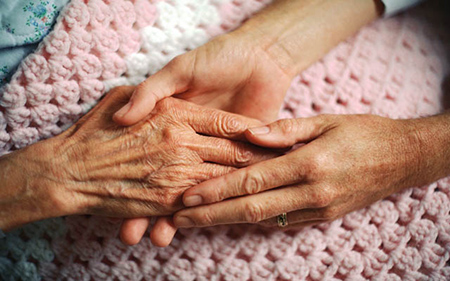Successful Dying: Researchers Define the Elements of a “Good Death”
Published Date
By:
- Scott LaFee
Share This:
Article Content

Researchers have identified 11 themes associated with “dying well.”
For most people, the culmination of a good life is a “good death,” though what that means exactly is a matter of considerable consternation. Researchers at the University of California, San Diego School of Medicine surveyed published, English-language, peer-reviewed reports of qualitative and quantitative studies defining a “good death,” ultimately identifying 11 core themes associated with dying well.
The findings are published in the April 2016 issue of the American Journal of Geriatric Psychiatry.
The research team, headed by senior author Dilip Jeste, MD, Distinguished Professor of Psychiatry and Neurosciences and director of the Sam and Rose Stein Institute for Research on Aging at UC San Diego School of Medicine, focused on three groups of stakeholders: patients, family members (before or during bereavement) and health care providers.
“This is the first time that data from all of the involved parties have been put together,” said Jeste, who is also associate dean for healthy aging and senior care at UC San Diego School of Medicine. “Death is obviously a controversial topic. People don’t like to talk about it in detail, but we should. It’s important to speak honestly and transparently about what kind of death each of us would prefer.”
The literature search culled through 32 qualifying studies. It identified 11 core themes of good death: preferences for a specific dying process, pain-free status, religiosity/spirituality, emotional well-being, life completion, treatment preferences, dignity, family, quality of life, relationship with the health care provider and “other.”
The top three themes across all stakeholder groups were preferences for specific dying process, pain-free status and emotional well-being. For other themes, however, different stakeholders put somewhat different levels of emphasis. For example, patients more often cited religiosity/spirituality as important than did family members, who believed dignity and life completion were more critical to a good death. Health care providers tended to represent a middle ground between patients and family members.
“Clinically, we often see a difference between what patients, family members and health care providers value as most important near the end of life”, said first author Emily Meier, PhD, a psychologist at Moores Cancer Center at UC San Diego Health. “Ultimately, existential and other psychosocial concerns may be prevalent among patients, and this serves as a reminder that we must ask about all facets of care that are essential at the end of life.”
The bottom line, said Jeste, is “ask the patient.”
“Usually, patients know what they want or need and there is relief in talking about it. It gives them a sense of control. I hope these findings spur greater conversation across the spectrum. It may be possible to develop formal rating scales and protocols that will prompt greater discussion and better outcomes. You can make it possible to have a good death by talking about it sometime before.”
Co-authors include Jarred V. Gallegos, Lori P. Montross Thomas, Colin A. Depp and Scott A. Irwin, all at UC San Diego.
Funding for this research came, in part, from the Sam and Rose Stein Institute for Research on Aging and the Moores Cancer Center at UC San Diego, and the American Cancer Society (grant MRSG-13-233-01 PCSM).
Share This:
You May Also Like
Engineers Take a Closer Look at How a Plant Virus Primes the Immune System to Fight Cancer
Technology & EngineeringStay in the Know
Keep up with all the latest from UC San Diego. Subscribe to the newsletter today.



